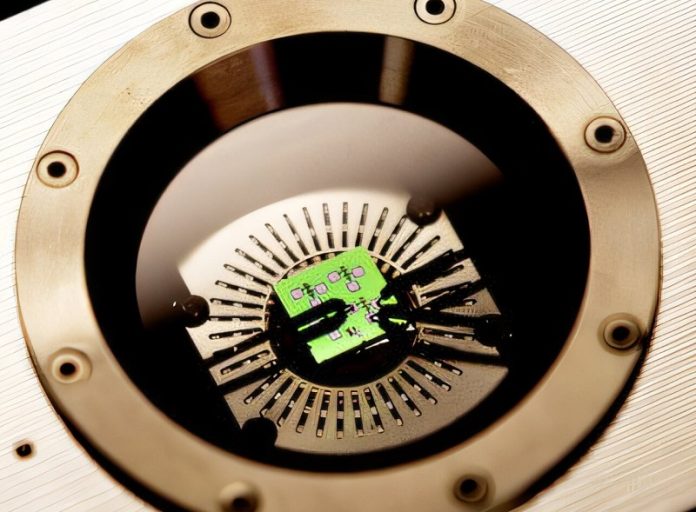
A team of engineers led by the University of Michigan has developed a groundbreaking computer memory device that can operate in extreme heat, opening the door to electronics that work in the harshest environments.
This new solid-state memory can store and rewrite data at temperatures over 1,100°F (600°C), which is hotter than the surface of Venus and the melting point of lead.
Designed in collaboration with researchers at Sandia National Laboratories, this memory device could revolutionize electronics used in fusion reactors, jet engines, geothermal wells, and even on sweltering planets.
Unlike traditional silicon-based memory, which fails at high temperatures, the new device uses oxygen ions instead of electrons to store information.
At temperatures above 300°F (150°C), standard silicon memory becomes unstable as it starts to conduct uncontrollable amounts of current, erasing the stored information.
The new memory device avoids this issue by relying on the movement of negatively charged oxygen atoms.
These oxygen ions move between two layers in the memory: a semiconductor layer made of tantalum oxide and a metal layer made of tantalum.
A solid electrolyte acts as a barrier, preventing other charges from disrupting the system.
The oxygen ions are guided by three platinum electrodes that control whether the ions are drawn into or pushed out of the tantalum oxide.
This process is similar to how a battery charges and discharges, but instead of storing energy, the movement of oxygen ions is used to store digital information.
Depending on how much oxygen is in the tantalum oxide, the material can switch between two states: insulating or conducting. These two states represent the 0s and 1s used in digital data storage.
The memory device has shown it can retain information at extreme temperatures for more than 24 hours.
While other materials have been developed for high-temperature memory, this device offers significant advantages. It operates at lower voltages than alternatives like ferroelectric memory and polycrystalline nanogap electrodes, making it more energy-efficient.
Another exciting feature is the potential for “in-memory computing.” By fine-tuning the oxygen gradient, the device could hold more than 100 resistance states instead of just binary 0s and 1s. This capability could allow the device to perform computations directly in memory, reducing the need for power-hungry processors.
However, there is a trade-off: the device can only write new information at temperatures above 500°F (250°C). For applications that require operation at lower temperatures, researchers suggest adding a small heater to enable writing.
This technology could be especially useful for artificial intelligence (AI) systems in extreme environments. AI often relies on large, power-hungry processors, but memory devices like this could handle some data processing locally, reducing the overall power demand.
“This could enable electronic devices for high-temperature applications that didn’t exist before,” said Yiyang Li, the study’s senior author and a materials science professor.
With its ability to withstand extreme heat and perform efficient computations, this memory device represents a major step forward in creating electronics that can thrive in harsh conditions.



